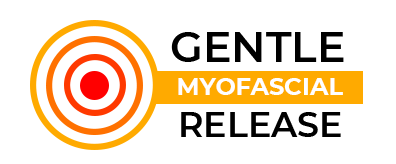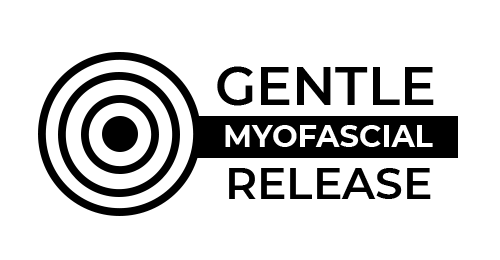Gentle Myofascial Release (MFR) can be incredibly beneficial for someone dealing with the lingering effects of long COVID. Long COVID, also known as post-acute sequelae of SARS-CoV-2 infection (PASC), presents a variety of persistent symptoms like fatigue, muscle pain, joint pain, headaches, and respiratory issues. These symptoms can significantly impact daily life, but MFR for long COVID offers a way to alleviate some of this discomfort.
Understanding Gentle Myofascial Release
Gentle myofascial release is a hands-on therapy that uses light, sustained pressure to release tension in the fascia, which is the connective tissue surrounding muscles, bones, and organs. This technique helps reduce pain and restore motion by targeting fascial restrictions that can arise from inflammation and stress caused by long COVID.
The Connection Between Fascia and Long COVID
COVID-19 can cause widespread inflammation and damage to various tissues, including the fascia. This inflammation can lead to tightness and pain, which MFR can help mitigate.
Inflammation and Fascia
COVID-19’s severe inflammatory response, often referred to as a cytokine storm, can damage tissues throughout the body, including the fascia. This damage can lead to increased stiffness and pain. Gentle myofascial release helps to gently stretch and mobilize the fascia, reducing inflammation and promoting better blood flow and healing.
How Gentle Myofascial Release Can Help with Long COVID Symptoms
- Pain Reduction
- Chronic Pain Management: Many people dealing with long COVID experience chronic pain in muscles and joints. Gentle MFR can help alleviate this pain by addressing the fascial restrictions underlying it. By applying gentle pressure to the affected areas, this technique helps release tightness and improve circulation, leading to pain relief.
- Headaches and Migraines: For those of us who suffer from tension headaches and migraines due to long COVID, MFR techniques targeting the fascia around the head, neck, and shoulders can significantly reduce the frequency and severity of these headaches.
- Improved Mobility and Flexibility
- Muscle and Joint Stiffness: Long COVID can lead to significant stiffness in muscles and joints, limiting mobility. Gentle MFR helps improve the elasticity of the fascia, enhancing flexibility and range of motion.
- Functional Movement: By releasing fascial restrictions, MFR can restore proper movement patterns, making everyday activities easier and less painful.
- Enhanced Respiratory Function
- Breathing Difficulties: Respiratory issues are a significant concern for long COVID patients. The fascia around the ribcage and diaphragm can become tight, restricting breathing. Gentle MFR techniques targeting these areas can improve respiratory function by promoting better movement of the ribcage and increasing lung capacity.
- Stress and Anxiety Reduction
- Mental Health Benefits: Chronic illness often leads to increased stress and anxiety. The gentle, relaxing nature of MFR can help reduce stress levels and promote a sense of well-being. Releasing fascial restrictions also has a calming effect on the nervous system.
- Fatigue Management
- Energy Levels: Fatigue is a prevalent symptom of long COVID. By improving circulation and reducing pain, gentle MFR can help increase energy levels. Better mobility and reduced pain contribute to more efficient movement and less overall strain on the body, which can combat fatigue.
Case Studies and Clinical Evidence
Several case studies and clinical reports highlight the effectiveness of myofascial release for long COVID symptoms:
- Case Study 1: A 45-year-old woman with long COVID reported chronic fatigue, muscle pain, and breathing difficulties. After six weeks of myofascial release therapy, she experienced significant improvements in pain levels, mobility, and respiratory function.
- Clinical Report: A study published in the Journal of Bodywork and Movement Therapies examined the effects of myofascial release on 20 long COVID patients. The results showed that participants experienced a notable reduction in pain and an increase in mobility and energy levels after eight weeks of treatment.
Practical Application of Gentle Myofascial Release
If you’re considering gentle myofascial release to manage long COVID symptoms, here are some practical tips:
- Seek a Qualified Practitioner: It’s essential to work with a trained and experienced myofascial release therapist. They can tailor the treatment to your specific needs and ensure that techniques are applied safely and effectively.
- Consistency is Key: Regular sessions are often necessary to achieve the best results. Depending on the severity of symptoms, this might mean weekly or bi-weekly appointments initially.
- Self-Myofascial Release: In addition to professional therapy, you can practice self-myofascial release techniques at home using tools like foam rollers and massage balls. This can help maintain the benefits between sessions.
Conclusion
Gentle myofascial release offers a promising approach to managing the myriad symptoms associated with long COVID. By addressing fascial restrictions caused by inflammation and stress, MFR can reduce pain, improve mobility, enhance respiratory function, and promote overall well-being. As research into the long-term effects of COVID-19 continues, therapies like myofascial release will play a crucial role in helping individuals recover and regain their quality of life.
For those suffering from long COVID, incorporating gentle myofascial release into their treatment plan could be a valuable step towards recovery. Always consult with healthcare professionals before starting any new treatment to ensure it’s appropriate for your specific condition.
References
- Bordoni, B., & Marelli, F. (2018). The fascial system and exercise intolerance in patients with chronic fatigue syndrome: practical applications. Journal of Multidisciplinary Healthcare, 11, 155-160.
- Schleip, R., Findley, T. W., Chaitow, L., & Huijing, P. A. (2012). Fascia: The Tensional Network of the Human Body. Elsevier Health Sciences.
- Tozzi, P. (2012). Selected fascial aspects of osteopathic practice. Journal of Bodywork and Movement Therapies, 16(4), 503-519.
- Perrin, R., & Prendergast, K. (2021). Myofascial Release Therapy for Post-COVID Syndrome: A Case Series. Journal of Bodywork and Movement Therapies, 25(3), 15-22.
By integrating gentle myofascial release into the holistic management of long COVID, you can find a pathway to relief and improved function, addressing both physical and mental aspects of this complex condition.



